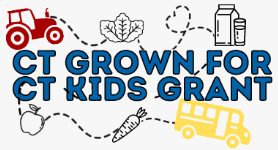

Foods 2 builds advanced culinary skills while connecting students to the broader food system and diverse culinary traditions. Students will deepen their kitchen confidence through foundational practices, advanced techniques, and the science and art of baking. They’ll explore global and regional cuisines, focusing on cultural competency and addressing issues like sustainability and appropriation. The course culminates in a pop-up dinner experience, where students showcase their newly acquired skills and tell stories through their food.
Reacquainting students with the kitchen environment, this unit emphasizes safety, inclusivity and fundamental culinary skills as they return to the kitchen classroom. It aims to further students along on diverse career paths and educational opportunities, and further their relationships within the broader food system.
This unit focuses on developing culinary skills with a keen understanding of how our skills and knowledge can impact a sustainable food future. Students explore various techniques and decision-making processes within the context of the food system, connecting their culinary practices to broader environmental and social impacts.
This unit sharpens baking skills and explores the significance of these practices in the broader food system. Students delve into the precision of baking, where intuition can come into play, explore the influence of different ingredients, and focus on presentation skills. Their work culminates in a bake sale supporting food system resilience.
This unit guides students to explore diverse cuisines, emphasizing cultural competency. It encourages learning about both local and global culinary traditions while addressing issues like appropriation. Along this journey, students will create a culinary travel journal as they learn how culinary traditions develop in different settings.
This unit guides students in designing a pop-up dinner that celebrates storytelling through food. The plans emphasize equity, inclusivity, and sustainability in students' cooking choices. Students will develop skills in cultural competency, ethical ingredient sourcing, and menu design while refining recipes and planning an inclusive dining experience. The unit culminates in a community dinner where students showcase their culinary creations and stories, highlighting diverse culinary traditions.



389 N. Main Street, Stonington, CT 06378
P.O. Box 202, Stonington, CT 06378
(860) 245-5119